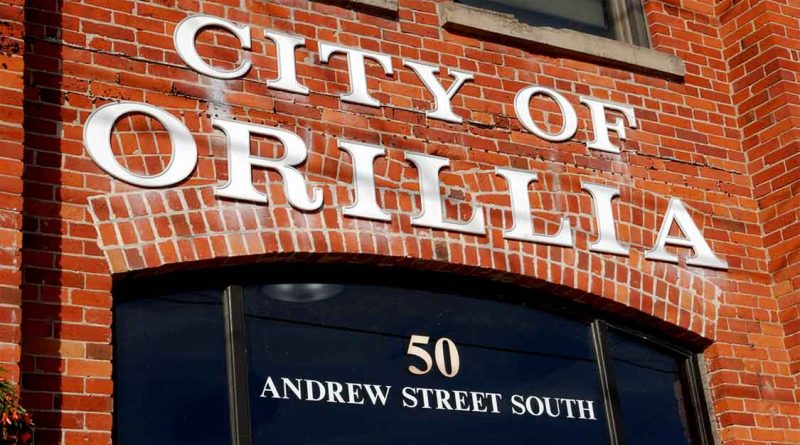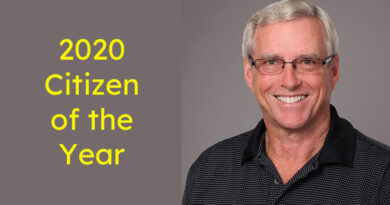Council Preview
By John Swartz
Council has a committee meeting Monday afternoon. Orillia’s development and engineering department has a report outlining changes to the Terry Fox Circle in Couchiching Beach Park. It does not bear resemblance to the Downtown Waterfront Parkland Design Study adopted in October 2020.
Council directed at its Jan 18 meeting that:
“Further to the approved 2021 Terry Fox Circle Detailed Design Capital Project, staff was directed to report back to Council with an evaluation of three design options and identify a preferred alternative for the future of the Terry Fox Circle. One of the design options will include Terry Fox Circle remaining open to vehicular traffic, with accessible parking spaces and a dedicated drop off spot in close proximity to the beach area.”
![]()



Staff is presenting two options, a preferred design and an alternative. The idea of remaining open to vehicles and a drop off close to the beach is not part of the staff’s preferred design
The original design retained a paved surface (paving stones), removed parking on the southwest side of the circle and added a parking lot for 44 cars in the area west of the playground.
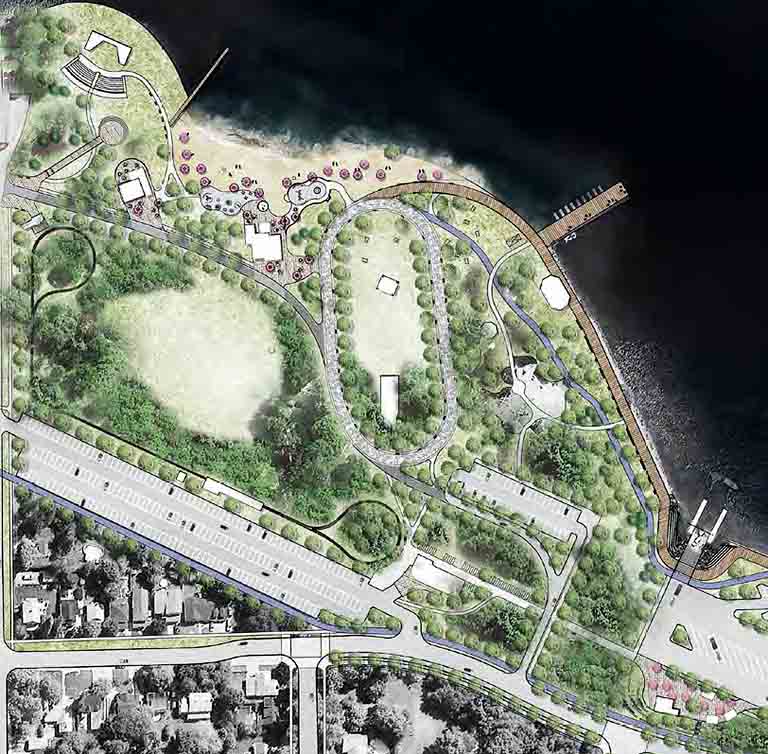
Study. October 2020
The staff preferred design presented to council removes the circle all together and does not replace parking as originally proposed. This discounts the use of the waterfront by those who cannot, or have difficulty walking.
The preferred design also includes a boardwalk extension past a small beach used by people with dogs, so there will be little room to allow pets to chase sticks and balls tossed into the water.

The alternate design re-routes the circle around the pavilion as a kind of turnaround for cars. The report claims this addresses council’s direction to retain vehicle access and provide accessible parking, which it does, but the concept of what constitutes close proximity to the beach might be different for those with mobility issues if the choice is negotiating grass fields instead of paved walkway to get near the water.
The report outlines a number of issues, all related to mixing cars and pedestrians, with the alternative proposal, and none for the preferred design.
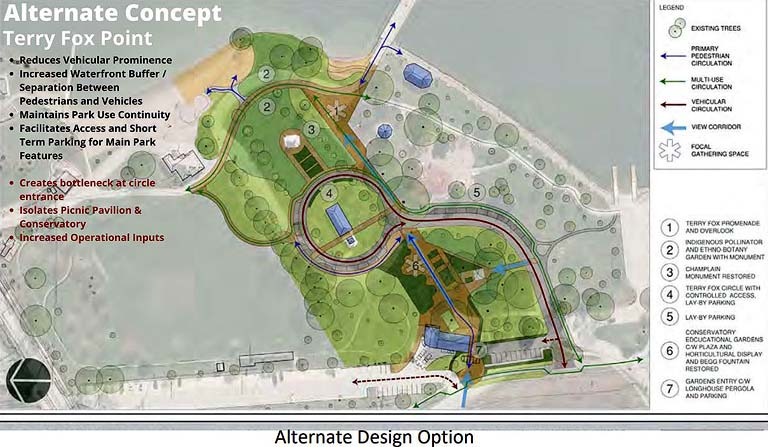
The proposal does include repair of the fountain (which has a name, the Begg Memorial Fountain) and there is a plan to demolish the greenhouse and rebuild it just north and east of its present location.
If council makes a choice construction will start in April 2022.
On the subject of water, another report has the unfortunate title, Enhance the taste and odour of the water supply, which is the opposite of the objective to remove the taste and odour.
One of the issues is chlorine is added to the system in such amounts it can be measured at the furthest extremes of the system and some people complain there is a chlorine taste. Staff are suggesting to add substations to boost chlorine at 4 or 5 key points at a cost of approximately $90,000 per station rather than use a huge amount at the beginning stage. The motion directs staff to review the carbon filter system and prepare a 2022 budget request to replace the activated carbon filters a year ahead of planned replacement. A 1999 study of the system found the most effective way to reduce taste and odour is with carbon filtration and the review is meant to find out if new technologies should be used.
Another problem some people have with tap water is Lake Couchcihing is shallow and gets warmer in the summer. This allows things that affect the taste, like algae, to grow. The City has two wells is uses to reduce the amount of water taken from the lake in the summer. Carbon filtering is meant to deal with this issue.
A part of the motion involves a promotion campaign to outline benefits of municipal water over bottled water. It is cheaper, safer and is not as harmful to the environment.
Taking out the Garbage
Two items relate to waste disposal. Katherine Whiteside and Chris Peacock of the Orillia Food Committee will present a report. This new committee of council was charged with making a Sustainable Food Action Plan, a strategy to promote sustainability of food supply. The report presents initial findings and asks for an extension of the committee’s work, presumably to make specific recommendations to address what they found.
Some of the initial recommendations within council’s ability to control are having goals to improve zoning to direct grocery stores be located on public transit routes, supporting emergency food organizations, and increase incomes (which is achieved by attracting businesses to locate here) so people can afford food.
This relates to waste disposal because 60% of food produced in Canada is thrown away making up 35% of garbage collection. A staff report to update Orillia’s waste minimization plan is on the agenda. In Orillia the diversion of food waste in green bins was targeted to achieve 65% in 2020 from a baseline of 40% in 2015 – it rose to 71%, so we are doing well on this count. The new goal is 85% by 2025. What is seems obvious is if we bought and prepared less food, we wouldn’t throw out so much, which might lead to more being available for those who can’t afford food.
Overall goal is to eliminate recyclable and hazardous items from the landfill and the main target is to get 75% of what is picked up at the curb diverted away from the landfill by 2025. We are currently at 64% which is short of the 2020 goal of 70%. A number of directions have been adopted by council, such as requiring clear garbage bags so reduction efforts can be targeted at those who do not recycle.
Committees
A cousin issue to food security is affordable housing and the City’s committee wants permission to increase the size of the committee by adding two more non-council appointees and to be able to recruit people who have expertise in the matter even if they don’t live in the City. Part of their issue is 3 members make a quorum and because of City policy that makes it an official meeting. This prevents the members from doing sub-committee work and increasing the size of the board allows the work to be shared better, so long as the quorum is left at three members.
Charge It
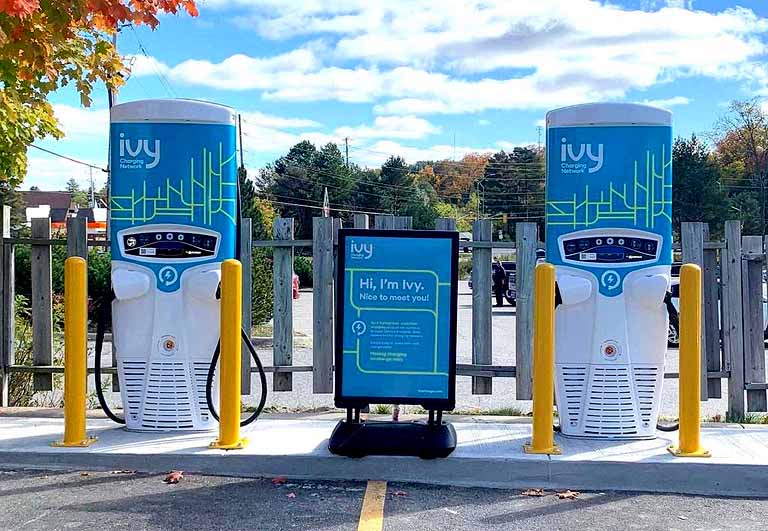
Council is being asked by the environment and infrastructure department to consider spending $8,000 annually for 10 years to set up to electric vehicle charging stations at the Orillia Recreation Centre. This is a joint venture with the Ontario Charging Network (aka, Ivy) to provide and maintain charging stations as a service. The federal government will fund 50% of the cost. The wiring infrastructure was part of the construction of the rec center ad is already in place.
Ivy also plans to install a charging station at Home Depot. Three others already exist in Orillia (Green Storage, Jim Wilson’s, Mariposa Inn). The City keeps net revenue beyond the annual service fee.
![]()



![]()
Enquiry Motions
There are 4 on the agenda. Concillor Mason Ainsworth was a report on the feasibility and cost of “installing trail etiquette and wayfinding signage throughout the trail systems.” Councillor Jay Fallis wants to know the feasibility and costs of severing the lot on City owned property on Benner street (former water tower site) in order to build affordable housing there.
Concillor Rob Kloostra want to know the feasibility and costs to, “repairing or replacing the west side of the Collins Drive boat launch.” And Mayor Steve Clarke wants staff to look into the feasibility of, “establishing an Orillia Diversity Advisory Committee,” in order to develop strategies and programs to, combating racism and discrimination.”
Prior to the 4 p.m. start of the public meeting, council has a closed session to discuss the disposition of Horne Business Park lands and a joint opportunity with Hydro One in involving land, presumably the City owns.
The regular council meeting is a video conference and the chamber is closed to the public. The public can watch it live on Rogers TV.
(Photos by Swartz – SUNonline/Orillia)

